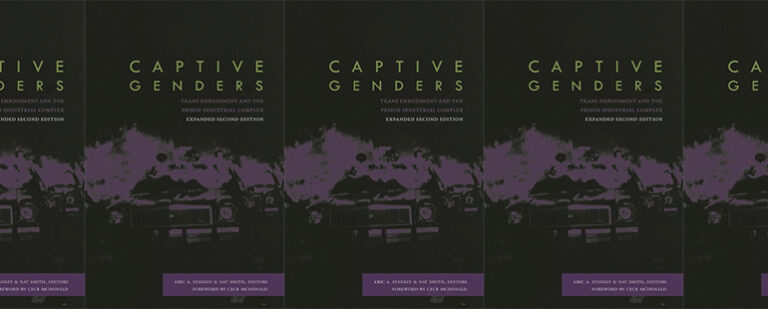The Body in Pain

Karen Havelin’s debut novel, Please Read This Leaflet Carefully, is an exploration of the body—in love, sex, childbirth, heartbreak, and—most of all—in pain. The body of Please Read’s protagonist, Laura, has been put through the ringer more times than she can accept: from myriad food allergies and the endometriosis that plagues her with constant abdominal pain, to the menopausal hot flashes brought on by hormonal treatment and the osteoporosis and joint pain all over her upper body, Laura is no stranger to the knowledge that one’s body can become one’s enemy. And yet, it is this same body that can love, create art, exercise itself to ecstasy, and experience the miracles of sex and childbearing.
Havelin’s book keeps readers teetering on the edge of an abyss that cannot quite be named—the notion of living an existence of ongoing pain, the isolation of a disintegrating body—only to pull them back to a sunny meadow of hope, beauty, and temporary relief. Moving backwards through time, the narrative explores not only the genesis of Laura’s sickness, but also gradually uncovers her origins as a woman. Moments of profound despair are interspersed with moments of glorious joy; these moments end up overlapping, with every second of every day being composed of conflicting elements.
When I was in labor, I felt as if I got a tiny glimpse into the life of people who suffer intense chronic pain. It felt like the pain was everywhere, like it was bigger than my body. The idiom “in pain” became crystal clear: I was in a universe made up of pain. Being used to aches that could be shooed away with a couple of Advils, I felt helpless knowing that I couldn’t control it, couldn’t make it go away. Even the epidural I finally opted for didn’t make the pain go away for a long time.
My experience, of course, had a clear endpoint. Though I had no clear timeline for my experience of pain, at some point in the near future, I knew, I would crawl out of this world made of fuzzy pulsating panic. But what would it be like not to have that option? What would it be like to remain in a dimension where painkillers only offered limited relief, never lasted long enough, and came with a devilish contract involving nausea, sleeplessness, uncontrollable sweating, early wrinkles, bloated organs, and constant fatigue? To simultaneously feel robbed of all you no longer have and also willing to give everything else up in exchange for a little more relief?
I don’t know. And that is part of what Please Read gets at: those of us lucky enough to lead healthy, undramatic lives would not care to admit it (if we realized it at all), but not only can we not understand the experience of living with chronic pain, many of us don’t particularly want to. Not because we don’t care, but simply because it’s hard to hear about. Even with my new sense of empathy, when I recently witnessed a friend in labor, I had an overwhelming urge to close my eyes and cover my ears. Still, I am interested. I want to hear all about it.
And even when we do listen, I mean really listen to those in pain, and offer all the support we possibly can, we cannot put ourselves in their shoes. Empathy has its boundaries, and chronic pain seems to be one of them. According to psychologist George Loewenstein, even doctors treating patients with pain have trouble relating to them properly. Havelin writes:
It’s crystal clear to me that no one wants to hear about it, but I will never finish needing to tell how much it hurt, how much it hurts, how bad it is. I’m always looking for a scale to measure it by, some way to pierce the thick skin that separates me from other people, to make them understand.
As I read, I found myself investigating this question of relatability. Like Laura, I live in New York City, where agony abounds on every street corner and where, to stay sane, those of us with gainful employment focus instead on the tiny tragedies of a stable life: leaky ceilings, rat infestations, sinus infections, sleep deprivation. They are real problems with clear solutions. They can take up as little or as much space in our minds as we let them, but they will probably go away soon enough.
How can we make up for this privilege? Should we apologize for it? Is an attitude of gratitude obligatory for those of us who are lucky enough to have something to be grateful for? Or does #blessed culture only widen the chasm between us? Could we be more helpful, less alienating, if we shared more of our own personal anxieties and unhappinesses? We all have troubles of varying degrees. How socially useful is it to focus on them?
As the book unfolds, protagonist Laura’s answer to this question evolves. At certain moments, she takes great comfort in the sunny disposition of a boyfriend whose powers of containment of her travails seem infinite. Other times, she hates everyone who has a life outside of a hospital ward.
As she grows more fluent in the management of her health, she becomes a kind of expert at taking pleasure as it comes. With this learned skill comes a clear message to readers both healthy and sick: Enjoy life while it unfolds normally, unexcitingly, the book urges. If you are in good health, check your ableist biases, your ignorance, and your discrimination, but do not become so guilt-ridden that you try to look and feel busy and stressed out all the time. Know that good health can end at any moment, and it’s worth pausing before you tie yourself into a knot over every little thing. If you are dealing with sickness or pain, delight in every moment of pleasure. Take every bit of comfort and assistance someone offers you.
As Laura learns to take back her body, own it, and use it as she wishes, she also acquires the skill of talking to doctors, friends, and lovers about what she wants and needs, wrangling the world in just the right way as to be truly seen. Stop apologizing, she urges. You want something? Take it. That’s your one job.


